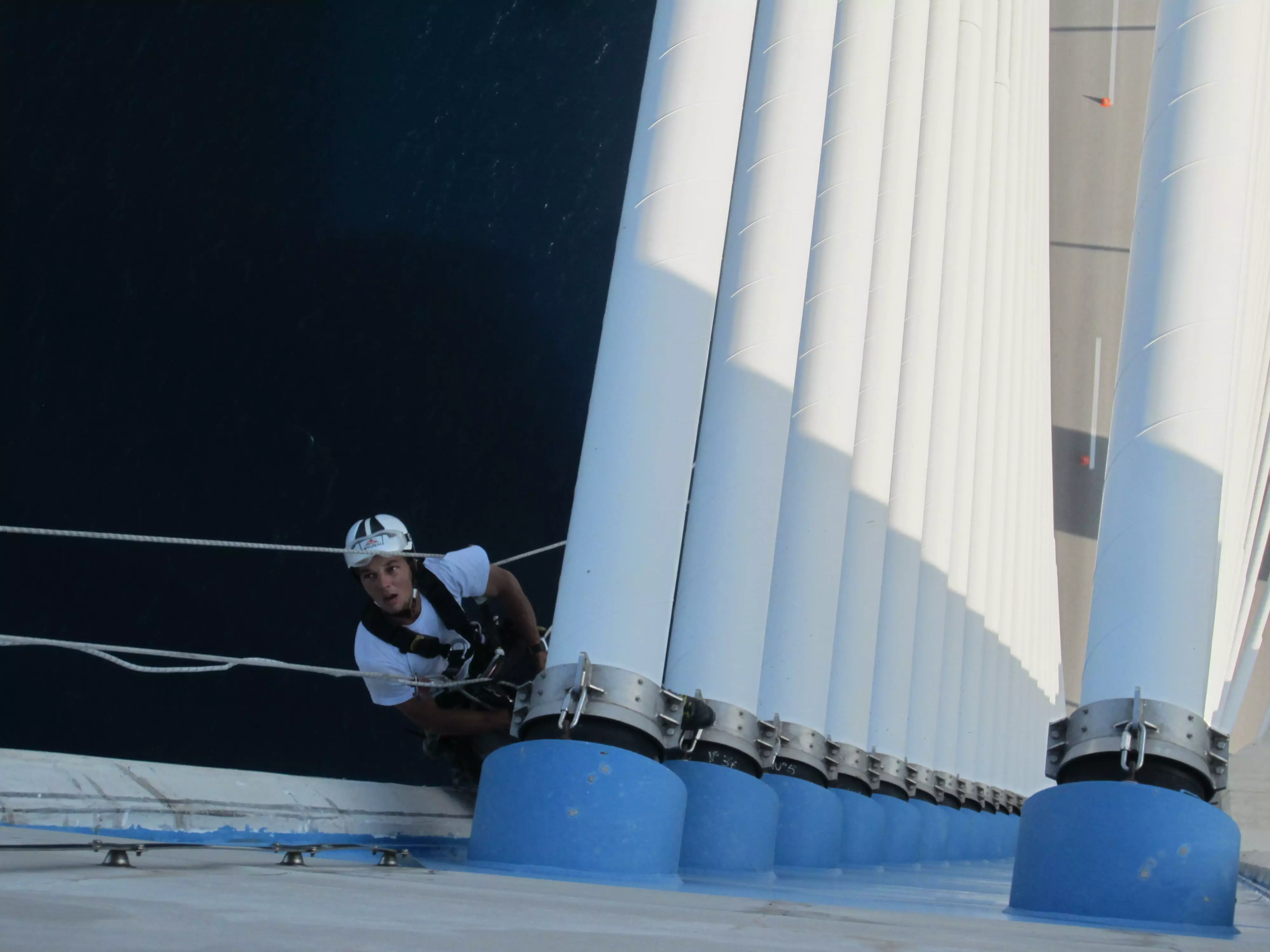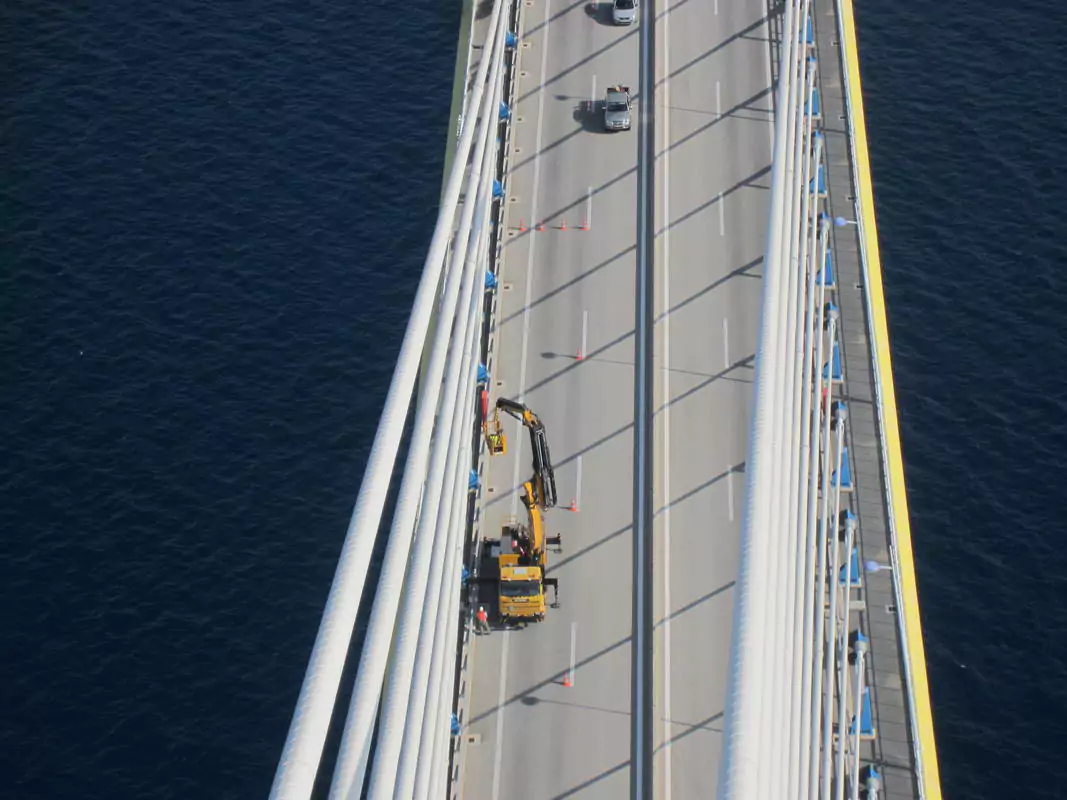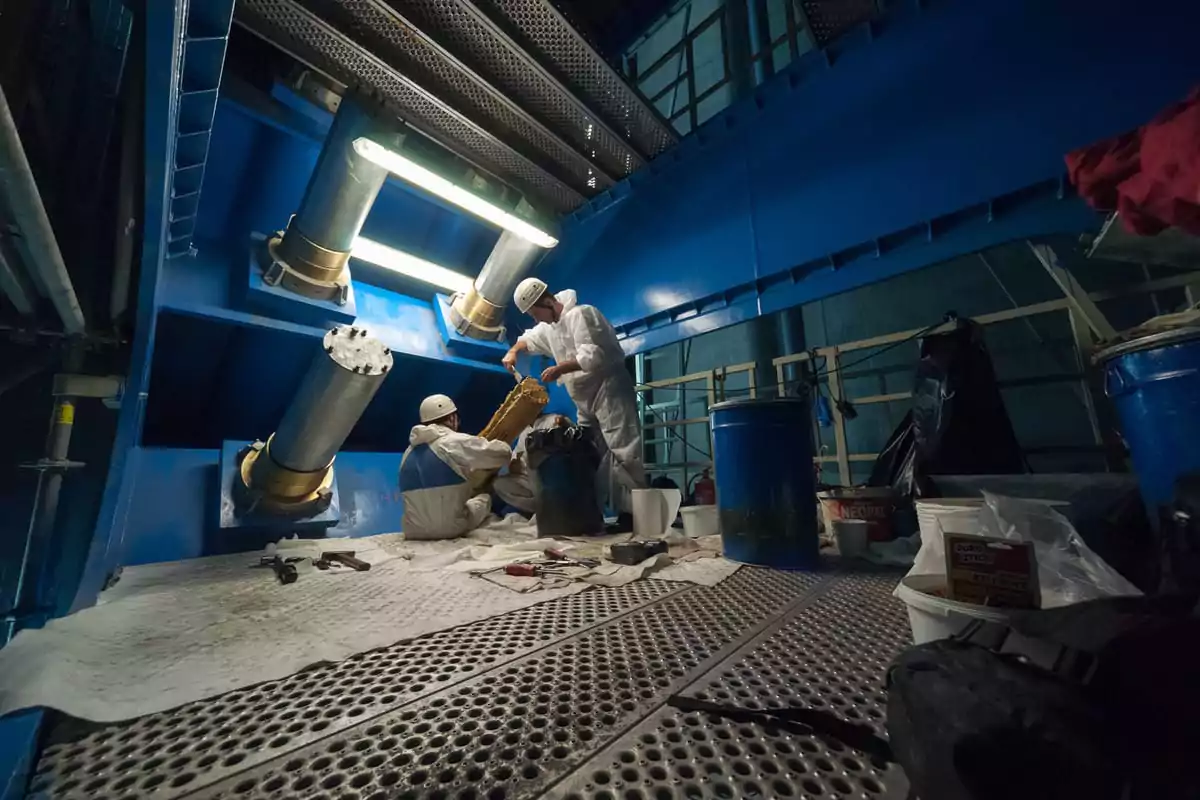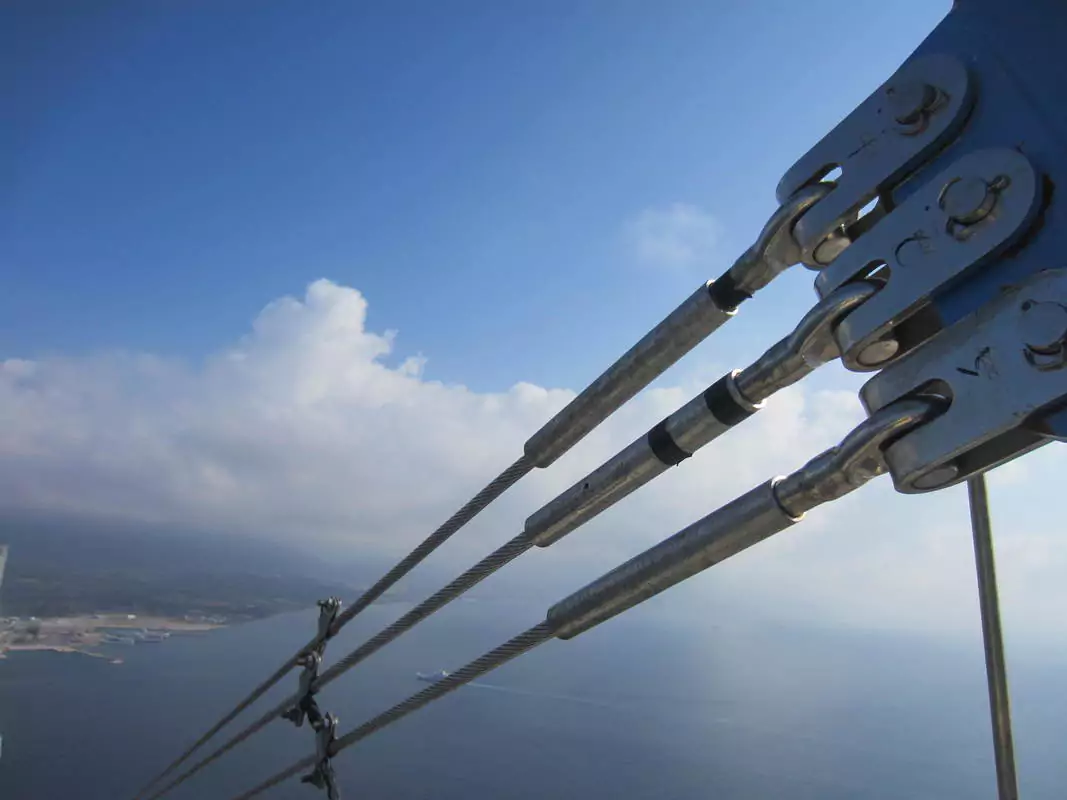Unpredicted strike
Six months after the grand opening, one of the longest cables failed after being struck by a bolt of lightning. Analysis of the incident, which occurred in January 2005, suggested that the lightning hit one of the steel collars, igniting the mastic sealant around the collar and heating the steel strands to failure.
Although the risk of the bridge being hit by lightning had been assessed in the initial design, the calculation of this risk relied on the keraunic level – a measure of the density of lightning strikes – as defined by the Greek standard. This was estimated at 30, corresponding to around three lightning flashes per year and per square kilometer – six or seven across the bridge area.
And while the towers had been protected against vertical strikes, experts considered the likelihood of horizontal strikes, which might hit the cables, to be extremely low.




